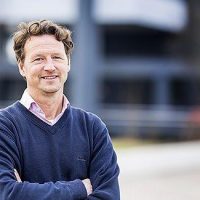Energy saving by implementing first smart thermal grid for buildings
TU Delft and Deltares have joined forces with Deerns, Kuijpers, Priva and Van Beek to realise the first smart thermal grid for buildings in the Netherlands on the TU Delft campus. Smart thermal grids help reduce CO2 emissions and also help to achieve the necessary energy transition. The parties involved completed the research phase of the project on 30 September 2016. The initial results are very promising and inspire confidence in the feasibility of the project. Moreover, the results show that a substantial energy saving is already possible with relatively little effort.
During this initial research phase, the behaviour of TU Delft’s existing heating network and the characteristics of the buildings on the campus were mapped out using simulation models. This formed the basis for harmonising supply and demand for heating and regulating the heating network more efficiently based on real-time data such as the weather and the heat generated in the buildings.
The simulations clearly show that it is possible to transport lower temperatures of hot water through the piping and still provide a pleasant temperature in the buildings. This is important for connecting to sustainable sources in the future.
Heating network control based on actual weather forecasts
Deerns and Deltares’ research results show that the use of gas boilers can be reduced by 20% without having to make any large-scale modifications to buildings. This saving will be primarily achieved by setting the temperature of the heating network as low as possible and dynamically based on current weather forecasts.
Priva and Kuijpers have successfully tested this new arrangement in part of the heating network. Van Beek subsequently makes the actual energy performances of the heating network clear by monitoring them.
Intelligent thermal networks – a necessary step in energy transition
According to Ivo Pothof, water and energy expert at Deltares, “For the Netherlands, implementing intelligent thermal networks is a necessary step in the energy transition, because heat consumes 40% of our primary energy”. “The TU Delft campus is a wonderful location for demonstrating this, a location where all know-how comes together.”
Along with the TU Delft campus, there are several other locations in the Netherlands where similar thermal networks could be utilised this way to promote more intelligent and efficient energy consumption.
You have not yet indicated whether you want to accept or reject cookies. This means that this element cannot be displayed.
Or go directly to:
TU Delft campus living lab
The TU Delft campus functions as a ‘living lab’, where experiments are conducted in an existing environment using innovative insights and methods. TU Delft’s heating network is connected to 23 buildings. The current heat sources available are CHP (combined heat power) installations and gas boilers.
Sander Snelleman, team leader Energy at the TU Delft: “It is extremely interesting for the TU Delft that the simulations can show us exactly where the bottlenecks in our heating network are that need to be addressed. The initial simulations are very promising. At the very least, they show us that with some slight adjustments it is possible to achieve a primary energy saving of 10 – 15%. This is in keeping with TU Delft’s ambition to sustainably generate a quarter of the existing energy demand itself or to purchase sustainably generated energy, to cut energy consumption by 40% and to halve CO2 emissions by 2020. The possible use of sustainable sources can help us further in achieving a CO2 neutral campus.”

